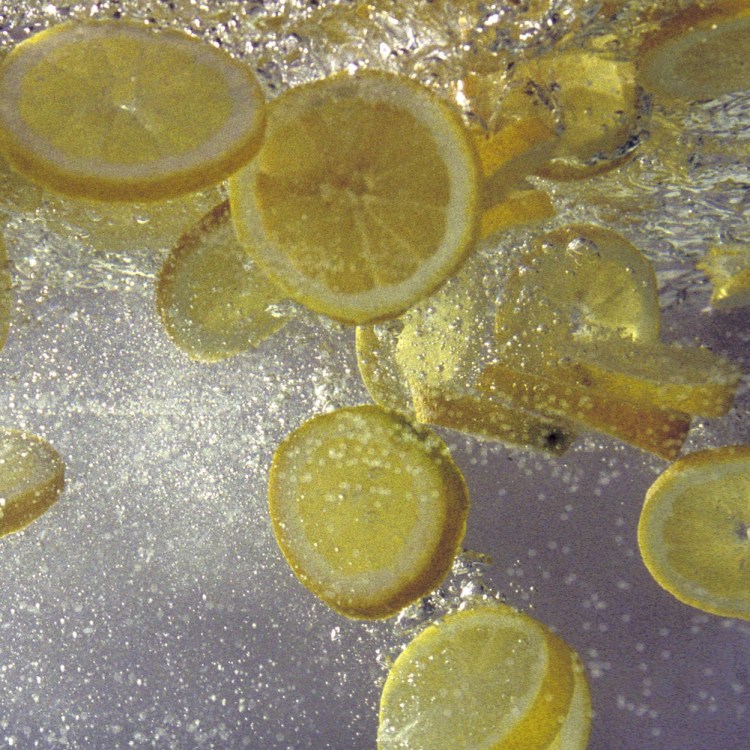If you’re looking to support your weight-loss efforts with more nutritious meal-planning this year, it can help to consider the “energy density” of the foods you’re eating.
The phrase, as outlined by the Mayo Clinic, refers to the number of calories present in a specific portion of food, a concept we’re all reasonably familiar with. But eating with energy density in mind is different than just cutting calories. It allows for a healthier, more proactive approach to satiety (a term that’s all the rage in the Ozempic era) by prioritizing building blocks that are full of fiber, vitamins and proteins.
In other words, lower energy density can coexist with nutrient density. It’s no silver bullet for weight loss, but it’s a nice perspective to have in your corner: A) I don’t have to eat so much to be full, and B) what I am eating is benefitting my body.
Below, we detail a day’s worth of low-energy-density consumption, some examples of foods with high energy density, and a few crucial disclaimers to keep in mind.
The Anti-Inflammation Primer: 7 Ways to Fight Back This Year
Chronic inflammation intersects with just about every disease you’ve ever heard of. Let’s get it under control.Breakfast, Lunch, Dinner
Maybe you’re like me: I always find it easier to wrap my head around these nutritional concepts by talking about real food. In this case, I’ve assembled three different meals, all of which include ingredients with low energy density. One thing to notice throughout? These meals make sense, and they don’t sacrifice on taste. There aren’t gaping holes in the ingredients as a way to shortcut weight loss.
Breakfast: Fruit and Yogurt Parfait
- Greek yogurt, strawberries, pineapple, blueberries, shredded coconut and chia seeds
Lunch: Mediterranean Wrap
- Whole wheat tortilla, chickpeas (rinsed and mashed), sliced red bell peppers, diced cucumbers, crumbled feta cheese, hummus, baby spinach, fresh mint, lemon juice, olive oil, salt and black pepper
Dinner: Grilled Salmon With Quinoa Salad
- Salmon fillet, quinoa, cucumber, cherry tomatoes, red onion, olive oil, lemon juice, parsley, salt and pepper
Give ‘Em a Chance
There are two likely concerns that some eaters might have after seeing a meal slate like that:
- Will I actually feel full?
- Won’t that cost a lot of money?
The latter is a reasonable point. But remember the words of Michael Pollan, who for years has written about the relationship people have with food: “Pay more, eat less. You do get what you pay for, and if you’re willing to pay more for pastured eggs or grass-fed beef, you’re getting something that’s more delicious, and you’ll feel better about eating it.”
He’s right. Buying good ingredients is worth it. And especially for this exercise, as the whole point is that you won’t have to eat as much of them. These foods pack a wallop on the fullness front, while staying low in calorie count. Some include lots of water (fruits), or fiber (leafy greens) or protein (nuts, beans, lean meats).
Things to Keep in Mind
As always, a disclaimer: nutritional advice is tricky, and aside from the most general health advice (“Eat colorfully”), it’s never one-size-fits-all. So when considering energy density, we request that you refrain from labeling foods that are high in energy density as universally “unhealthy” or “bad.” Food moralization is never the move.
There is way more nuance at play. Consider peanut butter, for instance. I certainly do: I have a massive dollop of the stuff in my smoothie each morning. Peanut butter is a poster boy for high-density consumption — it has high fat content and a ton of calories per serving. Am I doing something wrong? Well, no; considering the amount of calories I burn from running — and the fact that I’m not personally on a weight-loss plan — peanut butter is a welcome component of my nutritional planning.
But even if you are looking to lose some weight, foods with robust energy density deserve a place in your diet. Think chicken thighs, avocados, full-fat cheeses, dark chocolate. Or salmon, which was even the centerpiece of one of our sample meals above, despite the fact that it’s famously fatty. If you’re currently weight-conscious, the key is to approach energy-dense foods in moderation. To remember the merits of portion control. It’s a nice reminder, though, that you can mix high and low to victory.
One bit of hard-line advice we do feel comfortable committing to? Limit your consumption of the off-the-charts energy-dense crap. Think: processed meats, deep-fried foods, cookies and cakes, etc. If you’re trying to lose weight, this stuff makes it really hard. And somewhat ironically, they’re the most likely to rob you of energy throughout the day.
The Charge will help you move better, think clearer and stay in the game longer. Subscribe to our wellness newsletter today.




















